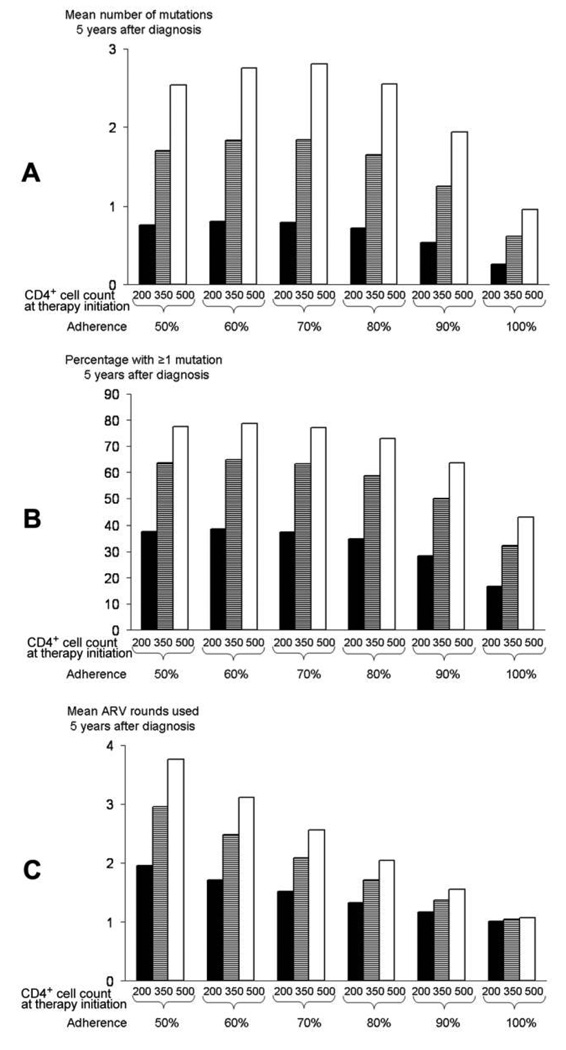Figure 2.
Impact of different treatment initiation thresholds on (A) mean number of resistance mutations accumulated, with all antiretroviral (ARV) drug classes combined, (B) proportion of patients with ≥1 resistance mutation, and (C) number of ARV regimens used, by adherence to therapy and CD4+ cell count at ARV therapy initiation (200 cells/µL, 350 cells/µL, or 500 cells/µL). Times reflect the interval after diagnosis of HIV infection and not the interval after treatment initiation. Accordingly, 5 years after receiving a diagnosis of HIV infection, individuals starting treatment at a CD4+ cell count of 200 cells/µL will have less exposure to therapy than those starting at a CD4+ cell count of 500 cells/µL. Results are shown for individuals 40 years of age with baseline viral loads of 100,000 copies/mL; results for other ages and viral loads differed only modestly. Even when ARV adherence is 100%, factors unrelated to adherence (e.g., pharmacokinetics, drug interactions, and low-level viral replication) may occasionally result in the development of drug resistance mutations.

